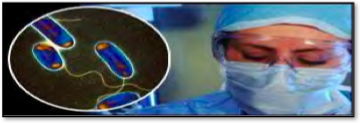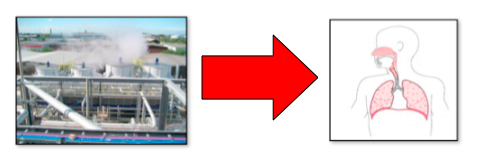What is it?
Legionnaires’ disease is caused by bacteria that belong to the family Legionellaceae. This family now includes over 50 species and 70 serogroups. Approximately half of these species have been implicated in human disease. Legionella pneumophila has 16 serogroups and is responsible for approximately 90% of infections. Most cases are caused by L. pneumophila, serogroup 1. Legionella species are small (0.3 to 0.9 μm in width and approximately 2 μm in length)
Legionnaires' disease is an uncommon form of pneumonia caused by the legionella bacterium. All ages can be affected but the disease mainly affects people over 50 years of age, and generally men more than women. Smokers and the immunocompromised are at a higher risk.

There are two main types of illness which can develop after being infected with the legionella bacterium:
- Legionnaires' disease. This causes a pneumonia (lung infection). It is usually a severe illness, sometimes fatal.
- Pontiac fever / Lochgoilhead fever. This is a mild flu-like illness caused be legionella bacteria, often affecting previously healthy and young individuals. Symptoms can include fever, headaches and muscle aches but, unlike Legionnaires' disease, Pontiac/Lochgoilead fever does not cause pneumonia. The illness will usually clear up without treatment within two to three days.
- Symptoms tend to become worse quite quickly as the infection spreads through the lung tissue. You may become breathless, breathe fast, and develop a 'tight chest'. You may have pain in the side of the chest when breathing ('pleuritic pain').
- Common 'non-lung' symptoms include confusion and diarrhoea.
- Complications develop in some cases and can cause heart, brain, kidney, gut or blood problems.
How is it treated?
The drugs of choice belong to a class of antibiotics called macrolides. The illness is treated with an antibiotic called erythromycin but other antibiotics are often used, for example: azithromycin, clarithromycin, levofloxacin, ciprofloxacin or doxycycline. If you are pregnant, erythromycin and azithromycin are safe for the baby. Sometimes a combination of antibiotics is used, if it is not yet certain whether the infection is due to Legionella or to other bacteria.
What is the prognosis?
Legionnaires' disease is a serious illness. If you were previously fit and healthy, you have about a 1 in 10 chance of dying from legionnaires' disease. If you were previously unwell, (for example, if you already have a lung disorder) then you have a higher risk of dying if you get legionnaires' disease. The outlook is best if the illness is diagnosed as early as possible, and you are treated with antibiotics as soon as possible. After recovery from legionnaires' disease, you may get symptoms such as tiredness, poor concentration, cough or mild shortness of breath. These may take several months to clear up.
How do we get it?
People become infected when they inhale legionella bacteria which have been released into the air in aerosolised form from a contaminated source.

Once in the lungs the bacteria multiply and cause either pneumonia or a less serious flu-like illness (Pontiac fever). Legionnaires’ disease cannot be contracted person to person.
Where does it come from?
The bacteria are widely distributed in the environment. They can live in all types of water including both natural sources such as rivers, streams and ponds and purpose built systems.

They survive low temperatures and thrive at temperatures between 20-45°C if the conditions are right, eg if a supply of nutrients is present such as rust, sludge, scale, algae and other bacteria. They are killed by high temperatures.
Hot and cold water systems actually account for more cases of legionellosis than cooling towers.

In a survey carried out by the PHLS in England and Wales between 1981 and 1985, 53% of hotels, 70% of hospitals and 75% of business premises studied contained legionellae in at least one sample from their hot and cold water systems.
The bacteria only become a risk to health when the temperature allows the legionellae to grow rapidly, such as in water systems which are not properly designed, installed and/or maintained.
Control and prevention of the disease is through good design and maintenance to prevent growth in the first place. If this isn't done and the bacteria proliferate then treatment of the source of the infection is required, i.e. by treating the contaminated water systems.
The UK has strict regulations to ensure that water systems used for air cooling or for use in commercial, tourist and other buildings or settings are maintained to standards that minimise risk from the disease and do not harbour the bacteria that cause Legionnaires' disease.

